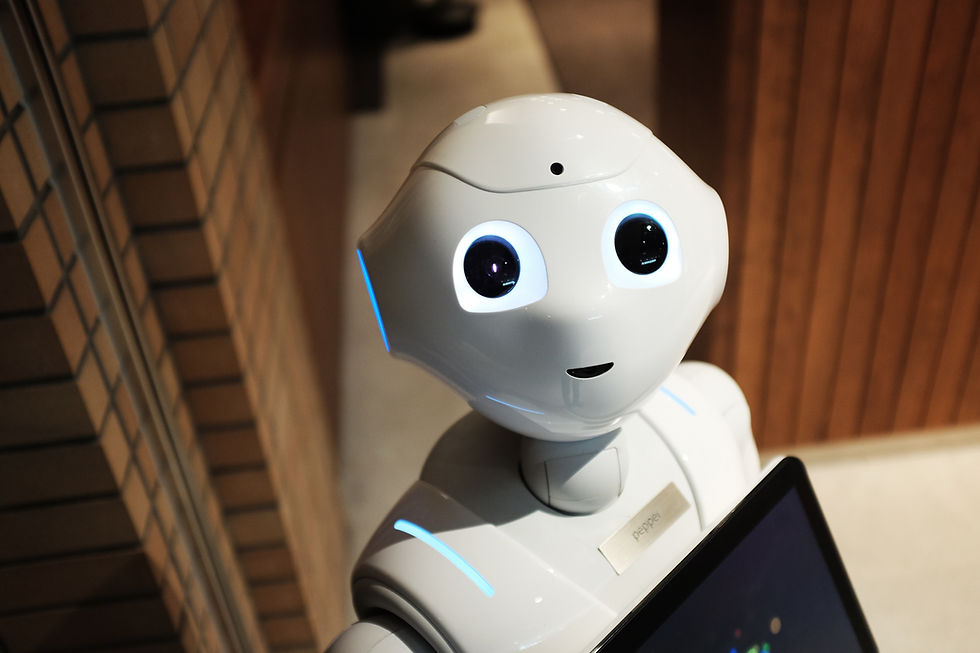We are living in a fast-paced modern world. Since the pandemic, flexible working, remote work and work from home options have opened up a lot more opportunity, however, may also see a ‘blur’ of the lines between work and personal life. Well-being programs are implemented in many workplaces, yet we are still seeing an alarming rise in Burnout!
Why is that?

We saw during the pandemic, people bouncing babies on the knees, whilst at the same time, furiously tapping away on their keyboards and then working into the night after the kids fell asleep to keep the hours up. For some, it has now become the ‘norm’.
The other day, I read a post on Linked In, about a lady praising her workplace for allowing her to work (from home) whilst she was quite sick, and her children were sick, on and off for several months. She cited how wonderful her company was to allow her to continue to work whilst so sick. Parenting and working - It’s such a tough balancing act!

Is it ideal to not have adequate rest whilst sick?
Particularly as a parent or carer?
I wouldn’t have thought so, however the public commentary on the post supported this apparent sacrifice of self-care. These are just some examples of the changes we’ve seen emerge in the last few years.
The way in which we work and live is being redefined.
We are amid the Fourth Industrial revolution, and you shall see the introduction of exponential technologies such as Artificial Intelligence, robotics, blockchain, the Internet of Things (smart devices) and virtual/augmented reality.

All of these things have influence on the way in which we live and is rapidly and radically changing the way in which we work.
You may also be hearing a lot of discussion about well-being and workplaces implementing well-being programs in attempt to create psychologically safe environments.
You may have also heard people talking more about stress and the rise of ‘burnout’. It is important to remember that certain levels of stress may be beneficial and act as a motivator, so we need to understand this more.
So firstly – what is Burnout?
"Burn-out is a syndrome conceptualized as resulting from chronic workplace stress that has not been successfully managed.
It is characterized by three dimensions:-
- feelings of energy depletion or exhaustion;
- increased mental distance from one’s job, or feelings of negativism or cynicism related to one's job; and
-reduced professional efficacy.
Burn-out is included in the 11th Revision of the International Classification of Diseases (ICD-11) as an occupational phenomenon. It is not classified as a medical condition". ~World Health Organisation
Burnout is a state of complete mental, physical, and emotional exhaustion. To experience burnout, it must affect every one of those 3 states. Note though we are talking about the relationship here to occupation.
Does it have impact on your personal life? – Absolutely!
You often see the effects of burnout spill over into personal lives, affecting relationships, physical and mental wellbeing. Often the person doesn’t recover during the normal break periods such as weekends or days off. Have you ever seen a friend or family member fall very unwell the moment they take a much-awaited holiday break?

What is NOT Burnout ?
It is NOT a mental health disorder, it is a result of chronic, long-term stress – noting that this unmanaged stress can lead to a mental health disorder, affect your physical health and behaviour. A range of symptoms will begin to develop.
It is important to recognise the signs! (And recognise them early so you can act). It is also important that all businesses are aware of the psychosocial hazards that presents risk to their employees. I liken it to redlining the engine in your car. It is simply not possible to redline your car’s engine with expectation that it wouldn’t break or be damaged.
Burnout is like redlining an engine! It would be reasonable to think that unmanaged stress would lead to damage of the mind and body. Often people associate burnout as some kind of personal failing on their part, however this is simply inaccurate.
It is incredibly important that both leaders and employees take steps to fostering a culture of well-being. I would not be able to tell you definitively what every business needs, as I am not working in your business, however all can take the same approach.
Listen to your workers – really listen. Try to understand the issues from their perspective. Utilise a variety of forums to discover the real truths. Provide a safe space for honest feedback.

Conduct a Risk Assessment with your workers to establish what psychosocial hazards are in the workplace and work as a team about how to eliminate or minimise the associated risks.
Remember it starts at the very top – Leaders are the role models. Team members will be guided by your lead. Put your best foot forward.
Raise awareness and educate, educate, educate! (Include Leaders in the education piece. They need support too)
Regularly check in – Is it working? What needs to improve? What needs to be sustained? Are new risks being identified? Is the work landscape changing?

Fostering a Culture of well-being - How would this look in practice?
Again, you really need to know the results of your Risk Assessment and be very transparent. This will look different workplace to workplace.
In the example I gave above, leaders were aware of the mum who was sick for many months, however appeared to actively encourage her to soldier on at the expense of her physical health.

Nine out of ten organisations now have some aspects of a wellbeing program in place. You may see well intended approaches, such as access to employee assistance programs (EAP), daily fruit offerings, access to meditation apps or discounted gym access etc. All excellent initiatives and these should continue, however we are talking about a culture of change here.
We want to hear from our workers and delve much deeper!

The following are just some tips and ideas for you. If your organisation hasn’t adopted this culture of well-being, then work as a team. Sit down and chat about what works, what doesn’t, and the ways in which you can support each other.
Here’s some ideas/tips to get you thinking: -
A dedicated afternoon that is free of ANY meetings. Planning a moment in the calendar that frees the team up to get work done.
An email free day (I worked for a company where the CEO determined Wednesdays were email free days to enable the business to focus on core business without distraction). The Sales team loved this initiative and allowed Corporate a little more dedicated time for admin tasks.
Walking meetings – take it outside and squeeze in some exercise too. Boost that Serotonin.

Ditch the lunch and learns – let workers have their recharge time.
Revisit commitments to meetings. Do you really need to attend every meeting?
Revisit the length of meetings. Does it really need to be an hour? Can it be reduced to just 15 or 30 minutes with some more prep time?

The availability of mental health days when needed.
Avoid sending emails over the weekend or late at night. (Schedule through Outlook to send during standard office hours). If you work flexibly, perhaps seek guidance from People and Culture (HR) about some appropriate wording for your email signature block to indicate your flexible hours and no need for others in the business to respond out of hours to your emails.
Lead by example – if you are a leader, are you eating lunch at your desk? What message does this send to your team members? As a leader are you constantly working into the night? never take a holiday? – your team will watch you closely for behaviours. Will they feel the weight of the choices you make, thinking they need to also role model your behaviours?

Block out regular time into your calendar for a lunch break.
Time out – feeling free to take some time out and take the dog for a walk, hit the gym, do some laps at the local pool or a walk on the beach (if you are lucky enough!) – anything to break up the day and allow you to recharge. We all know the benefits of time in nature and some Vitamin D, so why not seize this through our working day? Productivity shall soar! I have a son who has learning challenges. His school provides him with a time out card to allow him to leave the classroom for 5 or 10 minutes as needed, to give him time to get his head back ‘into the game’.
Look for ways to reinvigorate.
Take breaks – often when working from home in particular, workers simply don’t take sufficient breaks. We know this due to the rise in musculoskeletal disorders being reported. Use a break taker app, a reminder to get up and move, stretch, and adjust the eyes away from the screen.
If you are a leader, do check in on your remote workers. They will have a stronger need to feel ‘connected’.
For some businesses, decision has already been made to reduce the 5-day working week to a 4-day working week with the same rate of pay. This allows more ‘life’ balance into the picture. Something that strongly resonates with workers in terms of life values post pandemic.
Evaluate the resources required for the tasks. Easier said than done, however need to be realistic about what can be achieved, especially if decisions being made to reduce resources in any way.
This is not rocket science, simply ideas that have come from workers themselves about how they perceive their well-being needs may be met.
Stressors originating out of the workplace need to be well managed to avoid burnout. There are some bigger challenges that may relate to workplaces, and these shall need to be well considered and supported:
Some sectors may be exposed to violent environments or vicarious trauma though the work they undertake. (e.g. Social Workers, Health Care, Emergency Service workers etc). Risks need to be well-managed, and the controls well thought out. I would need to prepare a whole other blog on this subject alone, as a good understanding is needed in terms of exposure and risk to determine the related controls such as debriefing, access to support, rotation of roles, rotation of task, limit of exposure, well-being checks etc. etc.
The key is transparency, understanding the hazards and the assessment of risk. There should be mechanisms in place to ensure the early signs are recognised and supported with appropriate interventions.
Leaders, ask your teams what they think. Create a safe environment to encourage conversation about necessary changes for a sustainable Culture of Well-being.
The result? - A healthier future for all of us.
Want to know more? What the root causes really are?
What does it look like at your workplace and how are you going to be a part of this change?
Infinite Potential have conducted a study of the "State of Burnout 2023" and the report is available for download (free) - here.
Peek into the report, see how it relates to your workplace. Discover how you can make changes for your team, for your department, for your business.
Need some help to get started? We are here for you and have a range of programs to support you on this journey. Reach out today.


Comments